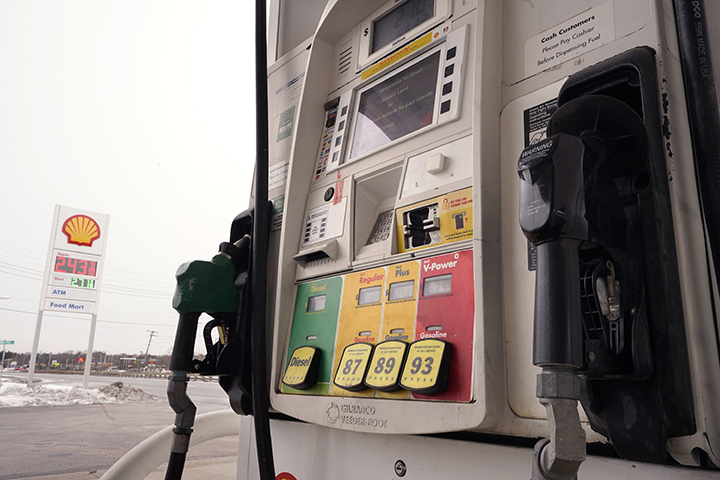Add one more potential item to the list of economic hardships dealt to Americans in the past 11 months: rising gas prices.
But you can’t blame it on the coronavirus pandemic. This one is on Mother Nature.
A deep freeze in the Gulf state region and beyond that killed dozens of people, left millions without power and jeopardized drinking water systems also forced as many as 11 refineries offline, according to travel app GasBuddy. The resulting capacity cuts could drive gas prices up by about 10 to 20 cents per gallon, said Patrick DeHaan, the head of petroleum analysis at GasBuddy.
The national average for a gallon of gas is currently between $2.54 and $2.57 depending on who you ask, meaning prices could rise to around $2.75 per gallon fairly quickly. That would be the highest price since the summer of 2019 and the highest seasonal price in more than five years, according to GasBuddy.
Fortunately, it shouldn’t last long, assuming refineries get up and running at full strength after the frigid weather moves out.
“Once power is restored, once temperatures rise above freezing, refineries will restart, oil production will restart and it shouldn’t have more than a several-weeks impact,” DeHaan said.
According to AAA Gas Prices, the national average price of diesel fuel today, Feb. 18, is $ $2.806, compared to $2.791 yesterday, $2.727 one week ago and $2.625 one month ago. That’s a total increase of just over 18 cents per gallon over the past month.
Also, because consumer gas demand has fallen as the pandemic forced millions of people to work from home, there are adequate reserves to prevent prices from rising too much, as far as standard gasoline is concerned.
“In terms of ‘transportation fuels demand,’ it’s kind of an opportune time,” said Tom Kloza, global head of energy analysis at Oil Price Information Service. “Gasoline demand is quite low and it’s going to continue to be low well into March. And we have very, very high inventories of product.”
Kloza said gasoline demand is about 15% below pre-pandemic levels, which comports with data from the U.S. Department of Transportation that estimates a 13.7% decrease in cumulative vehicles miles from January through November of 2020. And that includes positive gains in January and February of 2020, before the pandemic struck the U.S.
Demand for gas will be extremely low next week, Kloza said, but stressed that the recent weather-caused supply cuts won’t change his projections for the year.
“We think there will be enough mojo or enough things happening, a significant recovery in gasoline demand on the other side of the vaccinations that maybe we’ll get up to a national average of $2.75 or $2.80,” Kloza said.
By Matt Ott, business writer for the Associated Press, with contributions by Associated Press business writer Alex Veiga
The Associated Press is an independent global news organization dedicated to factual reporting. Founded in 1846, AP today remains the most trusted source of fast, accurate, unbiased news in all formats and the essential provider of the technology and services vital to the news business. The Trucker Media Group is subscriber of The Associated Press has been granted the license to use this content on TheTrucker.com and The Trucker newspaper in accordance with its Content License Agreement with The Associated Press.






